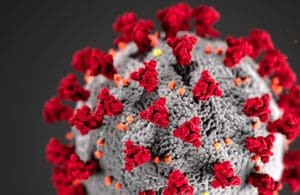
COVID-19
COVID-19 is mutating. And while early data suggest vaccines will be effective against more infectious COVID-19 variants that emerged in the U.K., South Africa and Brazil, the mutations could have a measurable impact on vaccine efficacy.
There’s perhaps a 50/50 chance that such new variants could lead to a “numerically meaningful drop” in vaccine efficacy, said Shane Crotty, a virologist at the La Jolla Institute for Immunology, in a UBS briefing call.
The Moderna (NSDQ:MRNA) and Pfizer (NYSE:PFE) vaccines promise 95% efficacy at reducing symptomatic disease when it comes to the SARS-CoV-2 strains that were dominant in 2020. But it’s plausible the efficacy number could drop to 85% or beyond. “I am definitely not saying that the vaccines would be non-functional anymore or would drop to less than 50% efficacy,” Crotty said.
While Pfizer recently released data suggesting their vaccine was effective against the N501Y mutation in SARS-CoV-2 found in the U.K. and South African variants, “there are still open questions there,” Crotty said. “The Pfizer data is good to see,” but “it’s not the whole answer.”
The study assessed vaccine performance against a single mutation rather than all 23 mutations found in the U.K. variant.
It’s possible that emerging COVID-19 variants partially evade vaccine-induced immunity, but they are unlikely to escape it altogether. “The bigger factor that plays into [the U.K. and South African] variants are transmissibility and viral loads,” Crotty explained.
It is difficult to determine how much more transmissible new variants are than their predecessors, but estimates suggest the U.K. variant, for instance, is anywhere from 30% to 70% more contagious than early SARS-CoV-2 variants.
Complicating matters further is the fact that the early SARS-CoV-2 strain that took root in Wuhan, China, is different from the version that swept much of the globe later in 2020. The latter variant, which had a mutation known as 614G, was roughly two to four times more transmissible than the novel coronavirus’s parent strain.
One reason that new variants could represent a greater threat than 614G is their potential to induce greater viral loads in hosts. A preprint analysis of 641 COVID-19 infections in the U.K. concluded that those infected with the new viral variant had 10 times to 100 times higher viral loads in the nasopharyngeal swab sample. “Clearly, the higher viral loads […] could determine the infectiousness of subjects, and thus the ability of the virus to transmit onwards,” the study authors concluded.
Another variant known as L452R that is spreading across the U.S. could also be more transmissible or resistant to vaccines, according to Charles Chiu, a virologist at the University of California at San Francisco, quoted in the Washington Post. Still, more data are needed to make a firm conclusion.
Still, new viral variants may have little to no effect on vaccine efficacy. If new variants caused vaccine efficacy to drop from 95% to 85%, the prospect of herd immunity against SARS-CoV-2 is still possible in 2021.
FDA’s requirement for COVID-19 vaccine efficacy is 50%.